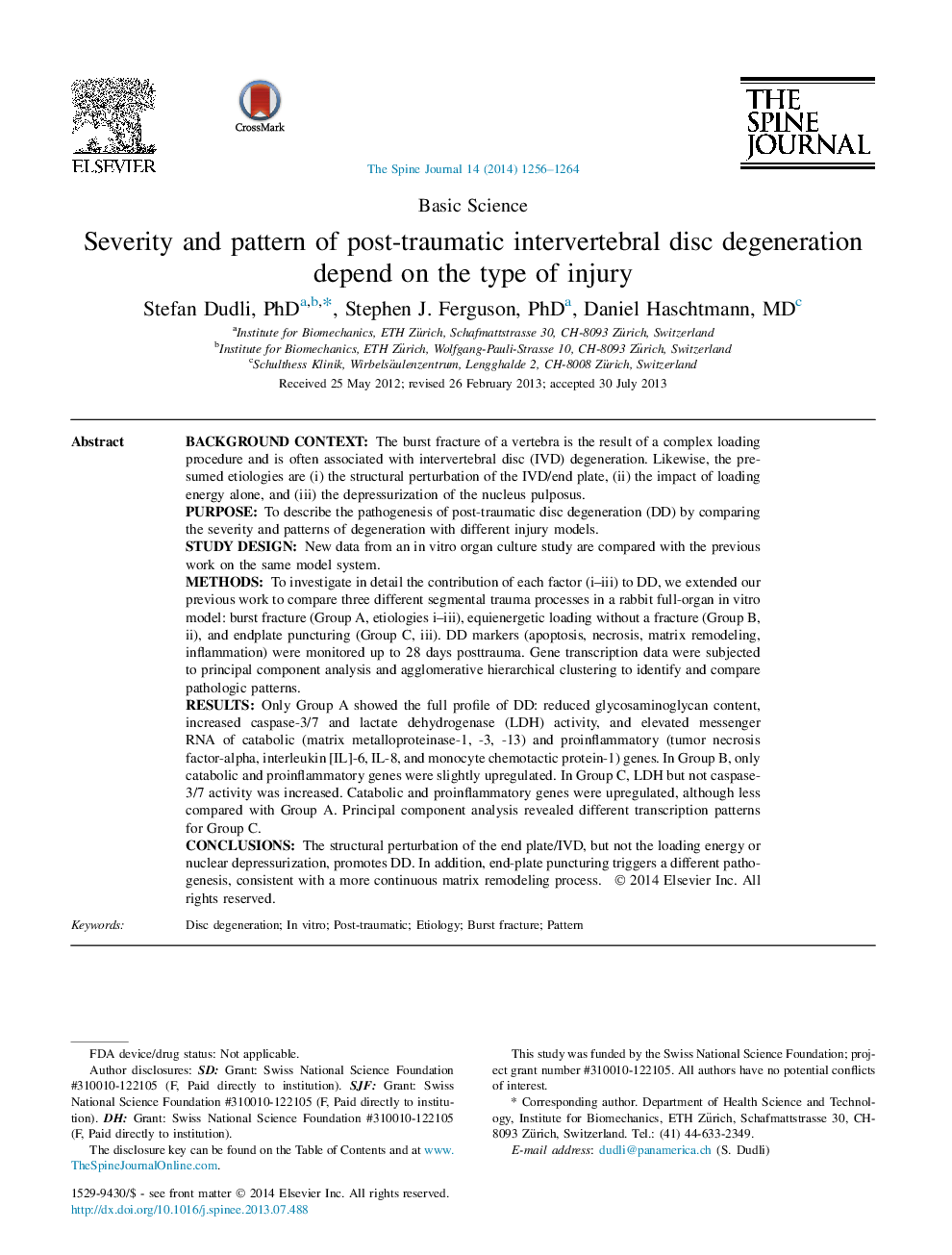| Article ID | Journal | Published Year | Pages | File Type |
|---|---|---|---|---|
| 6212380 | The Spine Journal | 2014 | 9 Pages |
Background contextThe burst fracture of a vertebra is the result of a complex loading procedure and is often associated with intervertebral disc (IVD) degeneration. Likewise, the presumed etiologies are (i) the structural perturbation of the IVD/end plate, (ii) the impact of loading energy alone, and (iii) the depressurization of the nucleus pulposus.PurposeTo describe the pathogenesis of post-traumatic disc degeneration (DD) by comparing the severity and patterns of degeneration with different injury models.Study designNew data from an in vitro organ culture study are compared with the previous work on the same model system.MethodsTo investigate in detail the contribution of each factor (i-iii) to DD, we extended our previous work to compare three different segmental trauma processes in a rabbit full-organ in vitro model: burst fracture (Group A, etiologies i-iii), equienergetic loading without a fracture (Group B, ii), and endplate puncturing (Group C, iii). DD markers (apoptosis, necrosis, matrix remodeling, inflammation) were monitored up to 28 days posttrauma. Gene transcription data were subjected to principal component analysis and agglomerative hierarchical clustering to identify and compare pathologic patterns.ResultsOnly Group A showed the full profile of DD: reduced glycosaminoglycan content, increased caspase-3/7 and lactate dehydrogenase (LDH) activity, and elevated messenger RNA of catabolic (matrix metalloproteinase-1, -3, -13) and proinflammatory (tumor necrosis factor-alpha, interleukin [IL]-6, IL-8, and monocyte chemotactic protein-1) genes. In Group B, only catabolic and proinflammatory genes were slightly upregulated. In Group C, LDH but not caspase-3/7 activity was increased. Catabolic and proinflammatory genes were upregulated, although less compared with Group A. Principal component analysis revealed different transcription patterns for Group C.ConclusionsThe structural perturbation of the end plate/IVD, but not the loading energy or nuclear depressurization, promotes DD. In addition, end-plate puncturing triggers a different pathogenesis, consistent with a more continuous matrix remodeling process.
